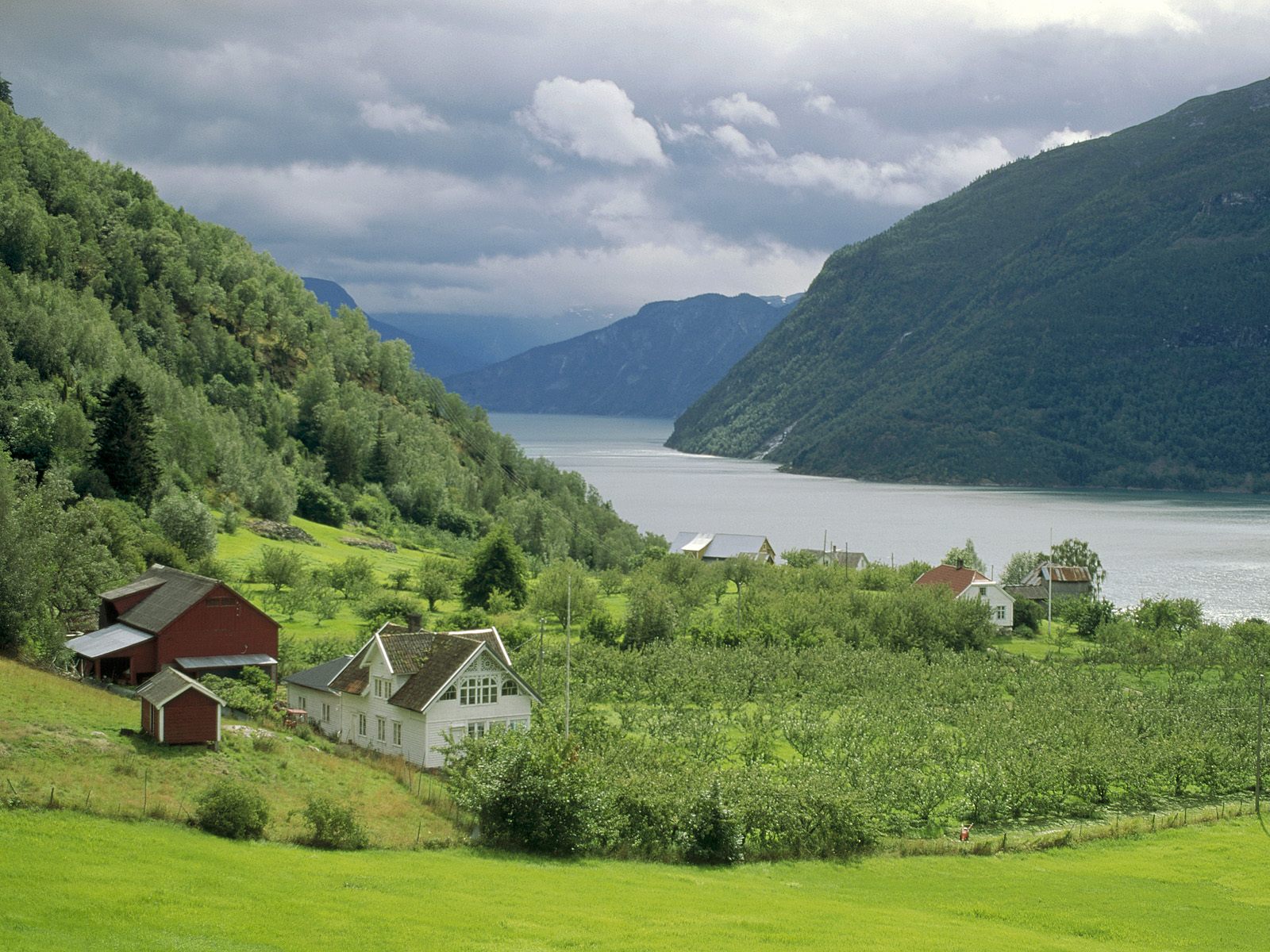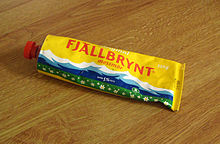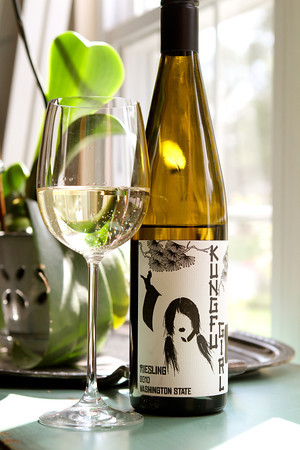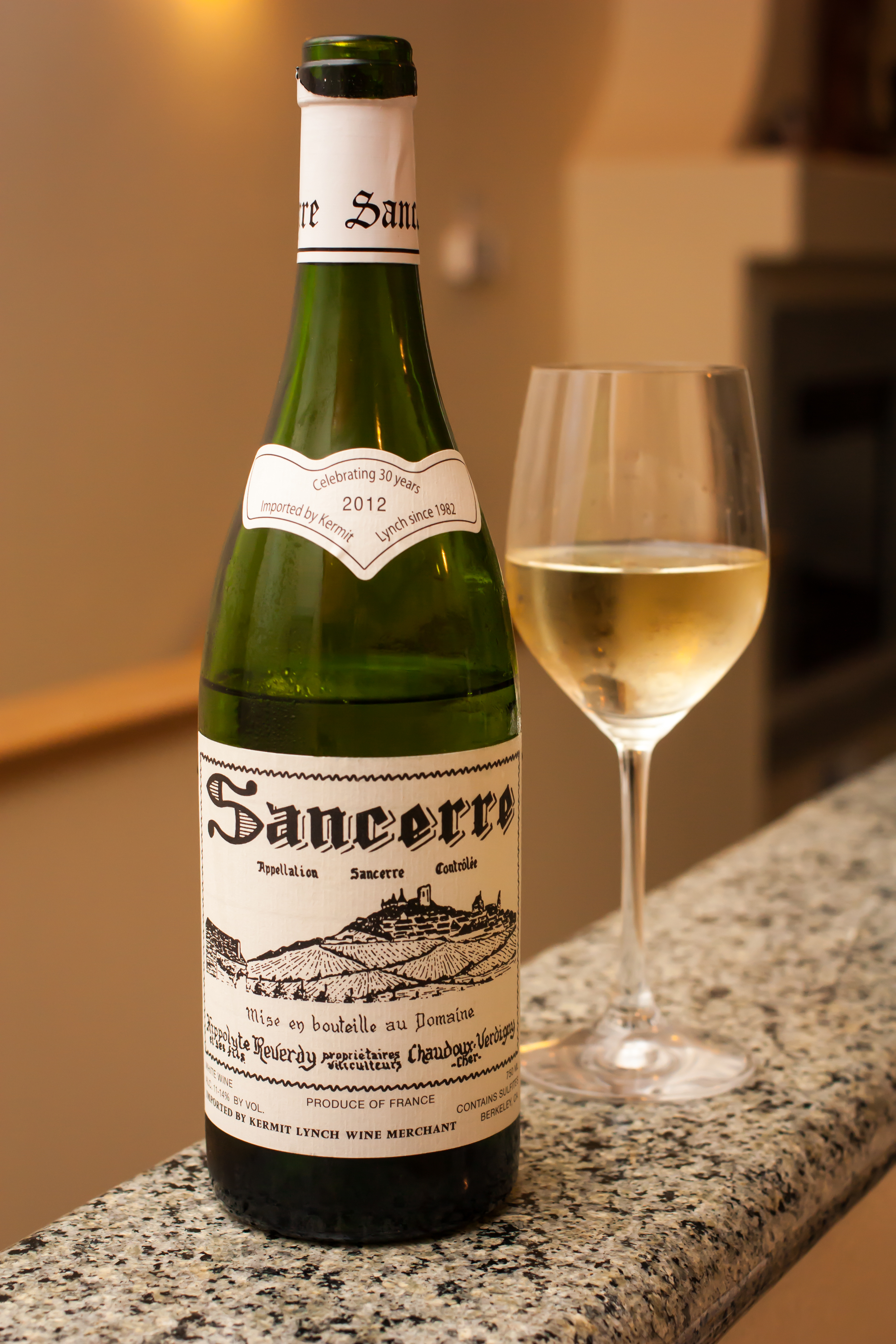 |
| Gjetost or Geitost is a traditional Norwegian cheese. |
When I was much younger, I was a world class mountain runner. At age 16, I set the women's record at the grueling Pikes Peak Ascent in Colorado. Of course with all the training I was doing, I had to consume a lot of calories. During one of my better mountain running seasons while I was in college, I fell into the habit of eating large amounts of Geitost cheese on Carr's Whole Wheat Crackers, which are more like biscuits or cookies than crackers. The combination is delightful and downright addicting. When I could find it, I preferred the Ekte Geitost, the pure goat's milk type, to the regular, half cow's milk and half goat's milk, version. This hasn't changed. I'm all about the pure goat milk kind which is usually darker in color. My training partner at the time preferred the regular Geitost on a baguette with a pat of butter.
 |
| Carr's Crackers with Gjetost is a great combination. |
Gjetost or Geitost, a type of Brunost, is one of those cheeses that people either love or hate. There's little in between with this odd dairy product. It's distinctive not only in its unmistakable taste but also in its strange appearance. It's brown, brun in Norwegian. Yes, you read that right. It's brown cheese. The raw sienna color comes from milk sugar that has been caramelized when whey is cooked for several hours during the cheese-making process. The more water evaporates, the more the texture of the cheese ends up like fudge, only harder and slightly drier.
 |
| It's brown cheese! |
 |
| Gjetost comes in rectangle blocks or thick round tubes. This slice from a tube is cut in half. |
Norwegians are smart about not over indulging and serve thin slices of this cheese on rye bread or cook it as part of the topping of a cheesecake, but there's nothing quite like biting into a thick piece of Geitost in a way that leaves teeth marks in the remaining chunk of cheese between your fingers. The creamy, chewy, dry texture makes you smack your lips, and the dairy residue coats your mouth in a way that allows your taste buds to bask in its full flavor. That intriguing flavor lingers even if the zing of the initial taste dissipates.
Ekte Geitost has a more robust, pungent taste with a hint of the country that emerges after the first bite. It's definitely goatier than the regular version. Be careful with the Ekte Geitost, because a few versions can taste rather fishy. Fortunately, those kinds are rarely imported. To find them you probably have to travel to the Fjords.
 |
| Ekte Geitost or Gjetost is made with pure goat milk. |
Despite the cheese-making process being fairly simple with no molds added, no washing of any rinds and no special aging, Geitost ends up being a unique and lovable cheese with a distinct tangy, sweet, caramelized peanut butter taste. In the same way Nutella is used for finicky kids at breakfast time, Geitost is often served to children in Norway who are picky eaters. The sweetness of the cheese is a draw, and there are calcium, vitamins and other minerals hiding in there too. Just a dash of saltiness can be detected, which is a nice contrast to the mostly sweet flavor. Unfortunately for vegetarians, the rennet used is animal based.
 |
Prim is a Gjetost paste that's made when the whey isn't cooked as long.
|
Serve Geitost on crackers or bread. Cook it in sweet tarts, or eat it plain with some sliced green apples. You can also try it as a fondue, dipping cubes of cake, fruit or cookies into the melted mixture.
 |
| Gjetost cheesecake is a sweet dessert that isn't found often in the United States. |
Kevin Downs, Assistant wine manager at Liquor Mart in Boulder, Colorado, suggests the following pairings for this cheese:
Just when I think Lize can’t come up anything more unusual, she comes up with this one. While the classic match for goat cheese is Sancerre, the wonderful Sauvignon Blanc from the Loire Valley, I don’t think it would work well because of the sweetness of the cheese.
If I were to do a dry wine, one thing that comes to mind is a Fino sherry. This is a dry, fortified wine from Spain and it has a very nutty flavor that I think would work very well with the sweetness. Hartly & Gibson make a nice one for only $13.97 and Barbadillo is pretty much the same quality at only $11.99. Barbadillo also makes a non fortified still white wine from the same grape as sherry is made from, Palmino. It sells for $9.99 and would be ideal.
Because of the sweetness of the cheese and the funky “goatiness”, I think a Riesling would work very well, Like Kungfu Girl, at $11.99, or Clean Slate for $9.99. Gewurztraminer, especially from Alsace, is intensely aromatic with lychee and spice on the nose and palate and a touch of sweetness. This wine would stand up well to this cheese. Ziegler, at $14.99 does a great job with theirs. I’m going to find this cheese as soon as I can as it sounds absolutely fascinating!
Enjoy!
 |
| A Riesling pairs well with Gjetost. |




































